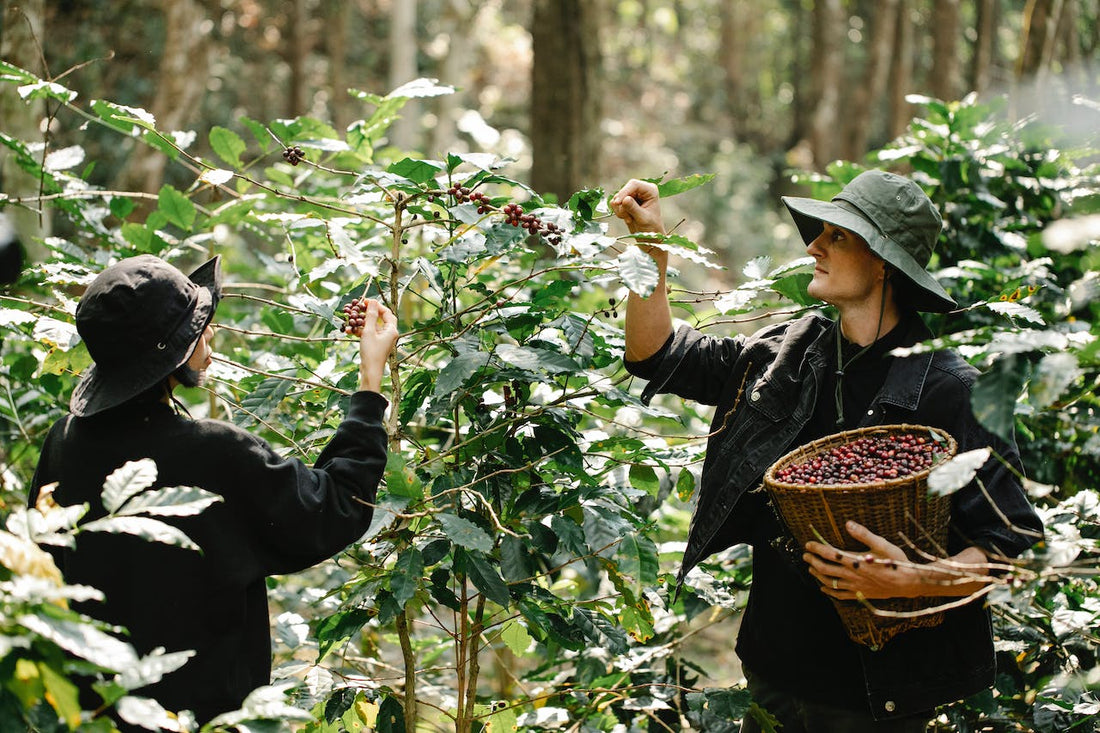
How Long Does It Take for a Coffee Tree to Reach Maturity
Share
Coffee plays an integral cultural and economic role in Costa Rica. The nation’s productive agricultural lands provide ideal growing conditions for producing some of the most coveted coffee beans in the world.
But transforming a tiny coffee seed into a fruit-bearing tree ready for harvest is no small feat. This process demands years of careful cultivation before the first red coffee cherries emerge.
Just how long does it take for a coffee tree to reach maturity in Costa Rica?
Sprouting: The First 3-4 Months
It all begins when coffee seeds are first planted. Under optimal conditions, it takes 3 to 4 months before the seed sprouts and a tiny seedling emerges from the soil.
Farmers typically sow seeds in nursery beds where the baby coffee trees can grow under protected conditions for 8-12 months before being transplanted outdoors.
Ensuring healthy soil, ample moisture, sunlight and drainage helps coffee sprouts thrive in these early months.
Maturing: Years 1-3
After transplanting seedlings outdoors, the real growing begins. But farmers must practice patience - coffee trees require 2-3 years of maturation before beginning fruit production. This stage focuses on structural growth, prioritizing the development of branches which will later support coffee cherry clusters.Costa Rican coffee growers employ meticulous cultivation practices during this time, including:
- Careful pruning to shape trees & improve productivity
- Providing structural support with stakes or trellising
- Supplying balanced nutrients through compost & fertilizers
- Controlling weeds, insects & diseases through IPM practices
- Ensuring adequate moisture during dry periods
Blossoming: Year 3
The payoff for years of patience comes when coffee trees finally reach maturity in their third year. It is only now that the flowering stage begins, marking the start of fruit development.
In Costa Rica, coffee trees generally blossom during the onset of the rainy season between late March to May. Though rainfall patterns influence timing, tiny white coffee flowers covering the branches signal the move towards production.
Each flower contains the potential for a coffee cherry if successfully pollinated.
Bees play a critical role during this flowering and pollination period. Growers often introduce beehives on or near the coffee farm, ensuring plentiful populations to transfer pollen between blossoms.
Since coffee originates from self-pollinating plants, growers maximize fruit set by facilitating cross-pollination between different genetic coffee strains.
Setting: Year 3-4
Pollinated coffee blossoms don’t immediately transform into plump fruits. First, the flowers must be fertilized so seeds form over the next several months. Layers of fleshy pulp also gradually develop around seeds, encapsulating them into what becomes coffee cherries. Unfertilized flowers eventually shed from branches.By the start of Year 4, successfully pollinated coffee trees will reveal tiny green fruits emerging along the branches. It won’t be long before they grow large and ripen into the crimson red coffee cherries that are harvested, processed and dried into those coveted coffee beans we all know and love.
First Harvest: Year 4
The very first crop of coffee cherries represent a long-awaited reward for farmers’ patient efforts. By Year 4, coffee trees reach peak production, finally bearing bountiful fruit ready for picking.
Timing is crucial - most Costa Rican coffee varieties reach peak ripeness for harvest between September to February.
These maiden crops rarely produce heavy yields compared to subsequent seasons. Still, first harvests mark a major milestone, transforming saplings into fruitful, working coffee trees at last.
With luck and attentive care, these coffee plants can continue producing for decades to come.
Takeaway
So, for those enjoying the renowned flavors of Costa Rican coffee, bear in mind the journey those beans took from seed to tree to cup. It may have only taken minutes to brew that cup of coffee, but it required 4 years of nurturing before that tree bore fruit!
